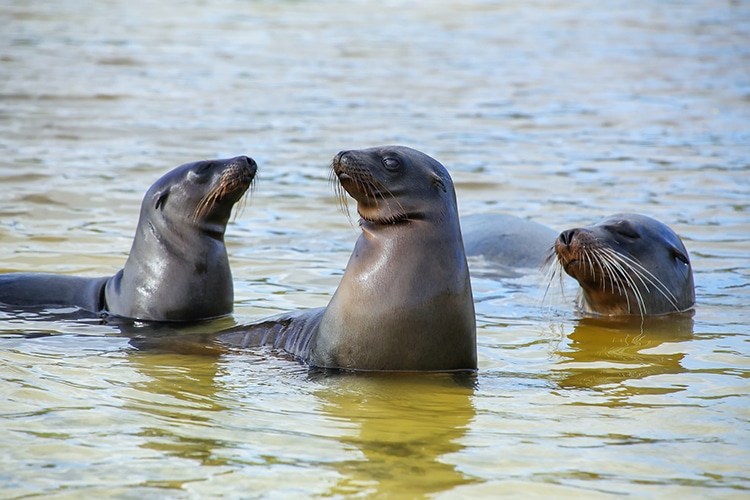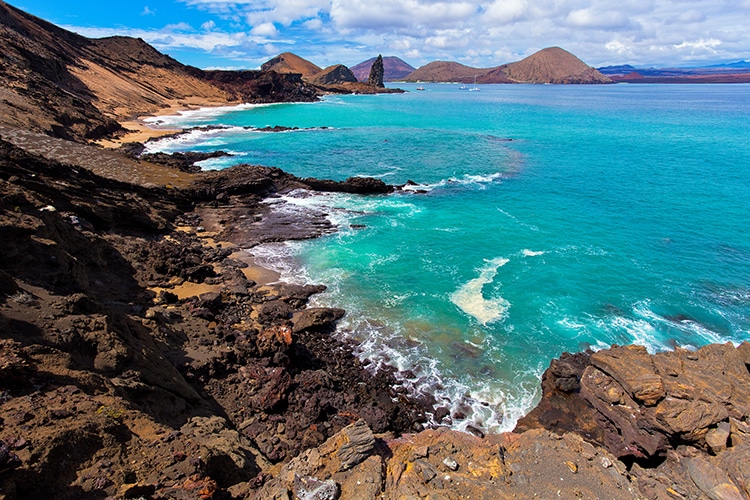Galapagos sea lions playing in water at Gardner Bay, Espanola Island, Galapagos Islands.
This channel is a popular migratory route for many species and is also known as the Galapagos-Cocos Swimway.
This area is now designated a no-take zone.

Galápagos sea lions playing in water at Gardner Bay, Española Island, Galápagos Islands. (Photo: DONYANEDOMAM/Depositphotos)
Hunting, fishing, and other activities harming animals and plants are forbidden.
The total protected area of the Galapagos Marine Reserve now stretches 76,448 square miles.
Protecting marine species is essential to preserving biodiversity, but it can also have beneficial effects for commercial fishing.

A marine iguana enjoys a swim in Puerto Ayora on the southern shore of Santa Cruz Island in the Galápagos. (Photo: David Adam Kess viaWikimedia Commons,CC BY-SA 3.0)
As species flourish inside protected regions, spillover replenishes overfished, unprotected regions.
To stay up-to-date, follow theGalapagos Conservancyon theirInstagram.
The addition of protected waters has expanded the Galapagos Marine Reserve by 23,000 square miles.

Bartolomé Island, Galápagos, Ecuador. (Photo: SUNSINGER/Depositphotos)
Bartolome Island, Galapagos, Ecuador.